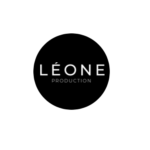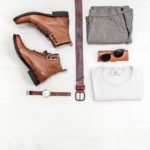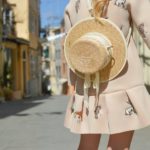Ah, the life of a fashion photographer – jetting around the world to exotic locales to take pictures of beautiful people. Sounds glorious. The reality is somewhat different for beginning fashion photographers. Only a very select few are shooting the swimsuit issue for Sports Illustrated, taking pictures of Victoria’s Secret models or photographing the latest advertising campaign for L’Oréal. It takes experience, sometimes years, and a gifted eye for composition and lighting to rise into the top ranks of the world’s fashion photographers.
Just remember: they all got their start somewhere.

Fashion photographers can work for clothing designers, retail companies that sell clothes and need images for their catalogs, as well as makers of cosmetics, perfumes and colognes, and luxury goods that can be shown off to best advantage when worn by a fashion model. This can include watches, jewelry, sunglasses, eyeglasses, headphones – really, any accessory you can think of.
In practical terms, this means the field is wide open with job opportunities for you to learn and gain experience as you work your way up to that tropical island beach assignment with supermodels frolicking in the sand.
Perhaps best of all, the cost of entry and training in this career field is low enough that practically anyone can get started in fashion photography with a minimal investment of time and money.
In this article you’ll learn:
- How much money you can make as a fashion photographer
- The required training and certifications
- Professional groups to join
- Employment opportunities for fashion photographers
- Finding clients
- Plus helpful tips
How much money can you make?
The average fashion photographer salary in the United States is $42,967 as of 2020, according to Salary.com. Self-employed professionals at the top of their game, working steadily, can easily make more than six figures a year.

Training and Certification
Photography is not regulated in any significant way in the United States, although there may be some requirements in place at the local government level. Chances are, there won’t be, but why take a chance? Just make two phone calls. One to your state licensing board and the other to your local city hall or county administration office.
You’ll need a business license to operate legally and in some states you’re also required to collect sales taxes from customers. Yes, you might think fashion photography is a service business, but if you hand over digital images on a USB storage drive or printed photographs to customers, the state may not see it the same way and decide you are selling a product.
Even though you won’t need a license to take pictures, training in fashion photography is essential. This photography style is much more involved than simple point-and-shoot picture taking. You’ll be working alongside makeup artists, possibly production designers who decorate the set, agents, representatives of the magazine, cosmetics company or other business sponsoring the shoot, as well as the models themselves.
No post-secondary education is required to be a fashion photographer, although employers may give preference to candidates with a college degree in photography and fashion photography specialization. As an alternative to a four-year college degree, there are a number of fashion photography training programs available throughout the country. Some are taught by fashion photographers as a sideline to their main photography business. Others are available online for you to complete at your own pace. The tradeoff with online training is you may not get as much feedback on your work.
Pricing for fashion photography training ranges from a low end of free online classes to $100 or more for programs that cover 4-12 hours of lectures and practical exercises. Most come with a certification of completion that you can customize, download, frame and hang in your office so potential clients know you are the real deal.
Professional Groups to Join
Becoming part of a professional organization shows you are committed to the craft and art of photography, plus you enjoy networking opportunities with other pros in the field. Below are two popular organizations for professional fashion photographers.

American Photographic Artists
Benefits include a photographer photo ID card, discounts on Apple electronics, a listing in the association’s directory to help new clients find you, and more. Membership tiers range from $50 to $500 per year.
Professional Photographers of America
A full membership is open to anyone living in the United States or its territories and costs $323 per year. Benefits include:
- $15,000 equipment insurance policy
- Data loss protection
- Access to all online education course
- Online referral database listing
- Printed and digital monthly issues of Professional Photographer magazine
- One full registration to Imaging USA during the first year of membership
- Business Resources
- Contracts and Copyright Resources
- Access to Member Discount Program
- Weekly newsletter

Employment
If you live in a major city or state that’s home to fashion magazines, clothing designers and retailer headquarters, these should be your first destinations on the quest for a new job. Drop off business cards and crisply printed copies of your portfolio of professional work.
- Contact local modeling agencies and ask permission to send or drop off a copy of your portfolio.
- Follow up with a phone call in a day or two. If the agent says she’s already working with a photographer, ask if she knows any modelling agents who need your services.
- Use the networking power of your professional memberships to find jobs.
Finding Clients
Business cards and a basic website should be the core of your marketing toolkit. The website need not be fancy or expensive. Just attractively designed, with photos of your best work, location and contact information. No need to include your pricing unless you know that your fees are less than what competitors are asking. Posting prices is a slippery slope. Before you know it, you’re updating your website every other day to keep pace with the competition. It can turn out to be a fast race to the bottom.

In addition to your business website, create an Instagram account to showcase your fashion photography services. Instagram is the #1 online venue for creative professionals to display their work. You can also use Instagram to find local fashion brands that might be in need of a great photographer for their next ad campaign.
Other strategies for attracting new business:
- Create a referral program with discounts for returning customers who bring new clients to you.
- Ask modelling clients to review your services online. According to a recent survey, 90% of people say their buying decisions are influenced by positive online reviews.
Good to know
- Take basic courses in photography so you are comfortable with all functions and features on your camera.
- Take pictures of models. You’ll find them all over the Internet. While you’re just starting out, when money is likely a major consideration, try to find models who are new to their field, as well. You might be able to barter your images in exchange for the model’s time during a fashion shoot.
- Set up your contracts and keep copies. You can download a free sample contract here.

- Get business liability insurance.
- As you acquire more lenses and photography equipment, consider buying a personal property insurance policy to safeguard your camera gear. It’s not uncommon for professional photographers to have well over $10,000 worth of equipment in their kit. If you’re traveling or shooting on location, then you are at risk of theft, foul weather, accidental damage and anything else that could potentially go wrong. Few things are more sickening to a professional photographer than a $5,000 camera lens with a hairline crack.
- Research fashion magazines that you like and study the photography styles.
- Develop your own style. Once you are proficient at taking great fashion pictures, start working on your own visual style. This is what will set you apart.
- Add to your equipment bag gradually, buying only what you need. The fastest way for a photographer to go broke is to go on a shopping spree for a lot of gear, especially lenses, which are expensive. A quality camera body and two lenses – a 24mm wide-angle and standard 50mm – should be enough to get started. As you start taking on assignments, you’ll want extra battery packs and memory cards, followed by a lighting kit that can break down for storage in a trunk or footlocker.
- As you break into major markets, consider hiring an agent to help you find work. That way, you can concentrate on shooting. An agent gets a cut of your earnings, typically around 10 percent, but agents are also skilled in securing higher-paying, more prestigious jobs for their clients.
If you enjoyed this article, check out some more great PocketSuite.io content that can help you grow your career as a fashion photographer. Here’s a great place to start.PocketSuite has thousands of business owners who all started where you are right now. Our community is always happy to help you ramp up, grow your client base, and achieve your income goals, both within the PocketSuite app and as part of our exclusive Facebook Community Group. PocketSuite’s vision is for any professional to be able to work for themselves and make a great living. It starts here. It starts with you. It starts today. Let’s get started, download PocketSuite now! Feel free to reach out with any questions (we’d love to hear from you)! Text us @ (415) 841-2300.





